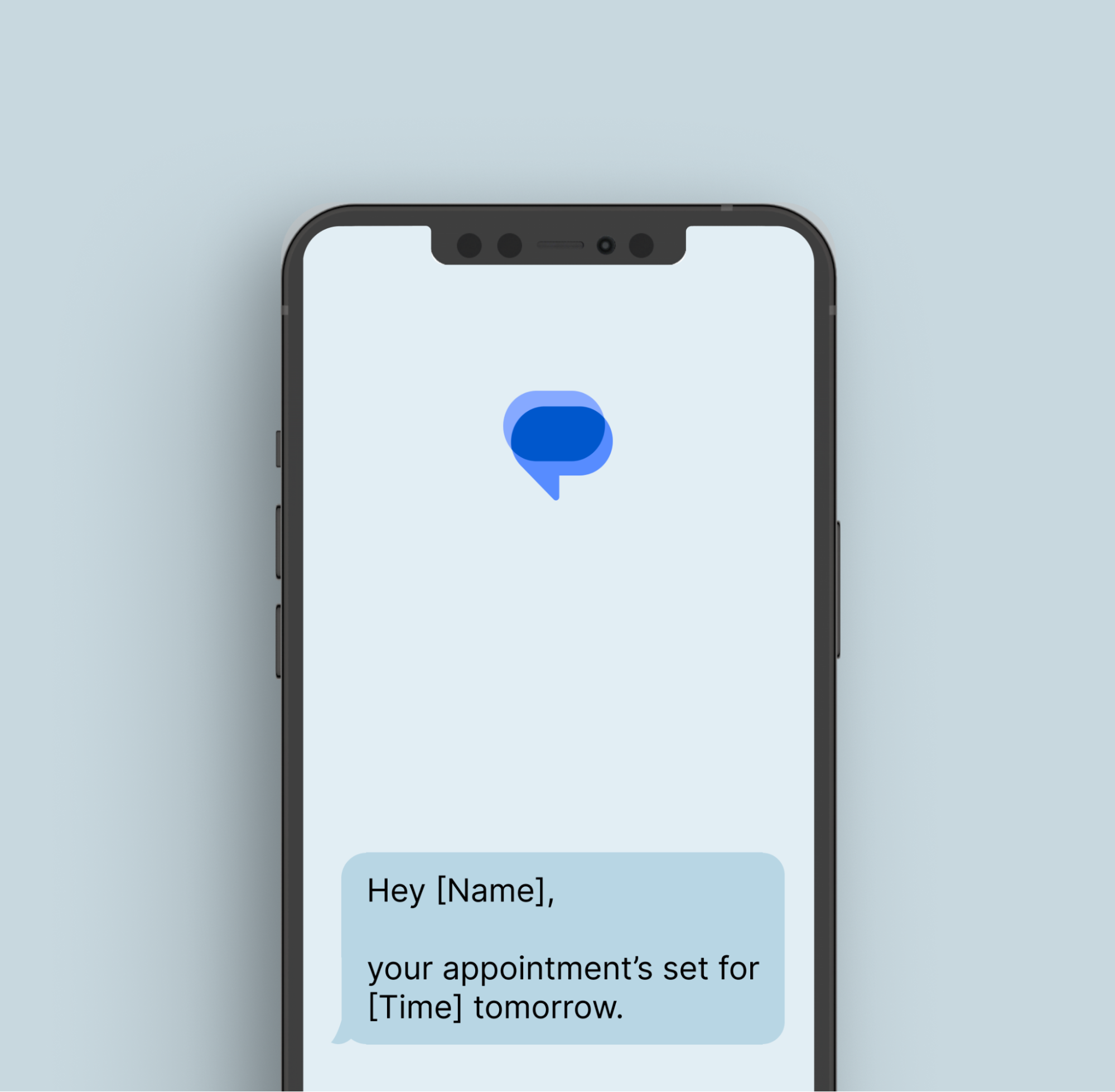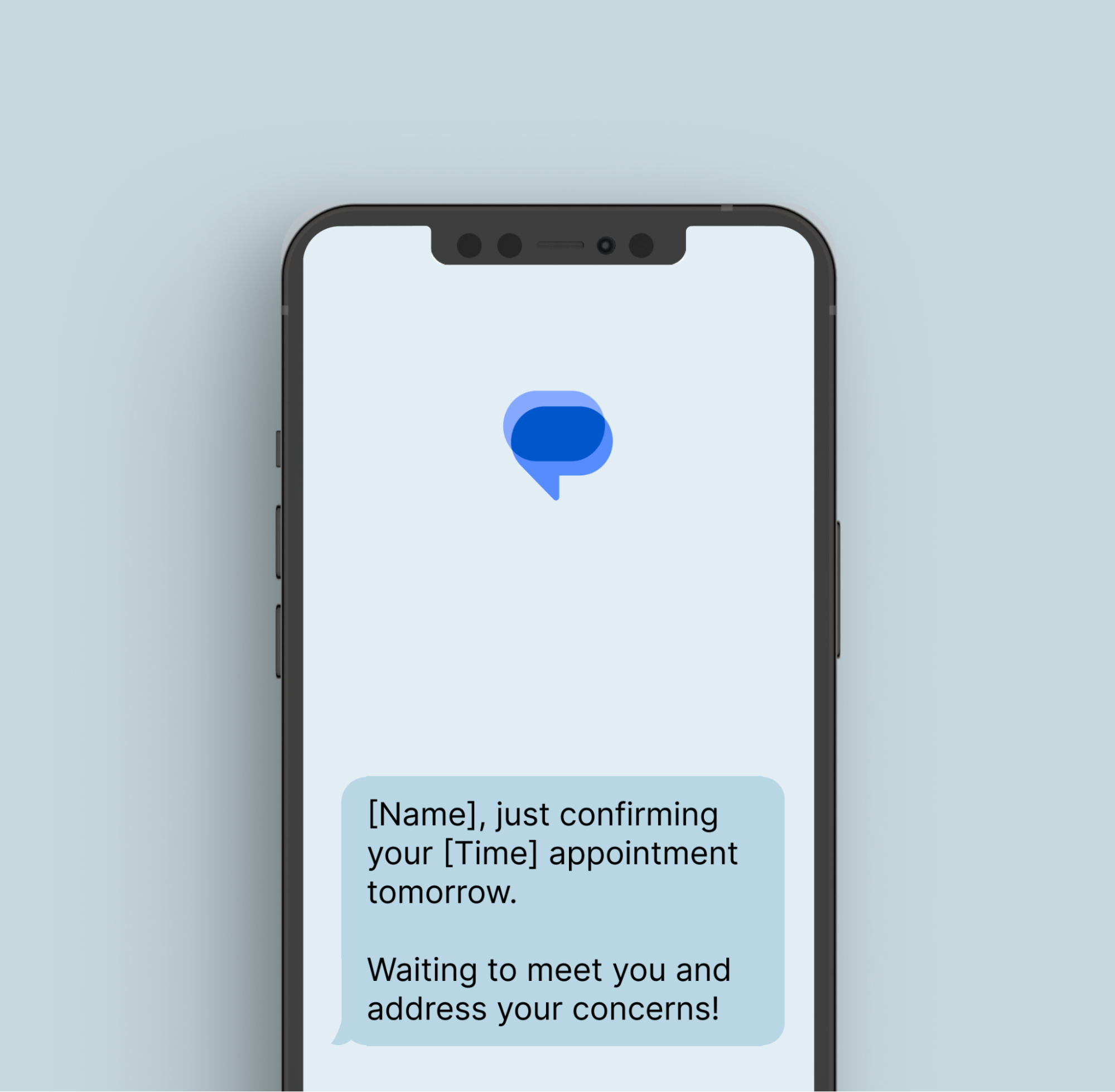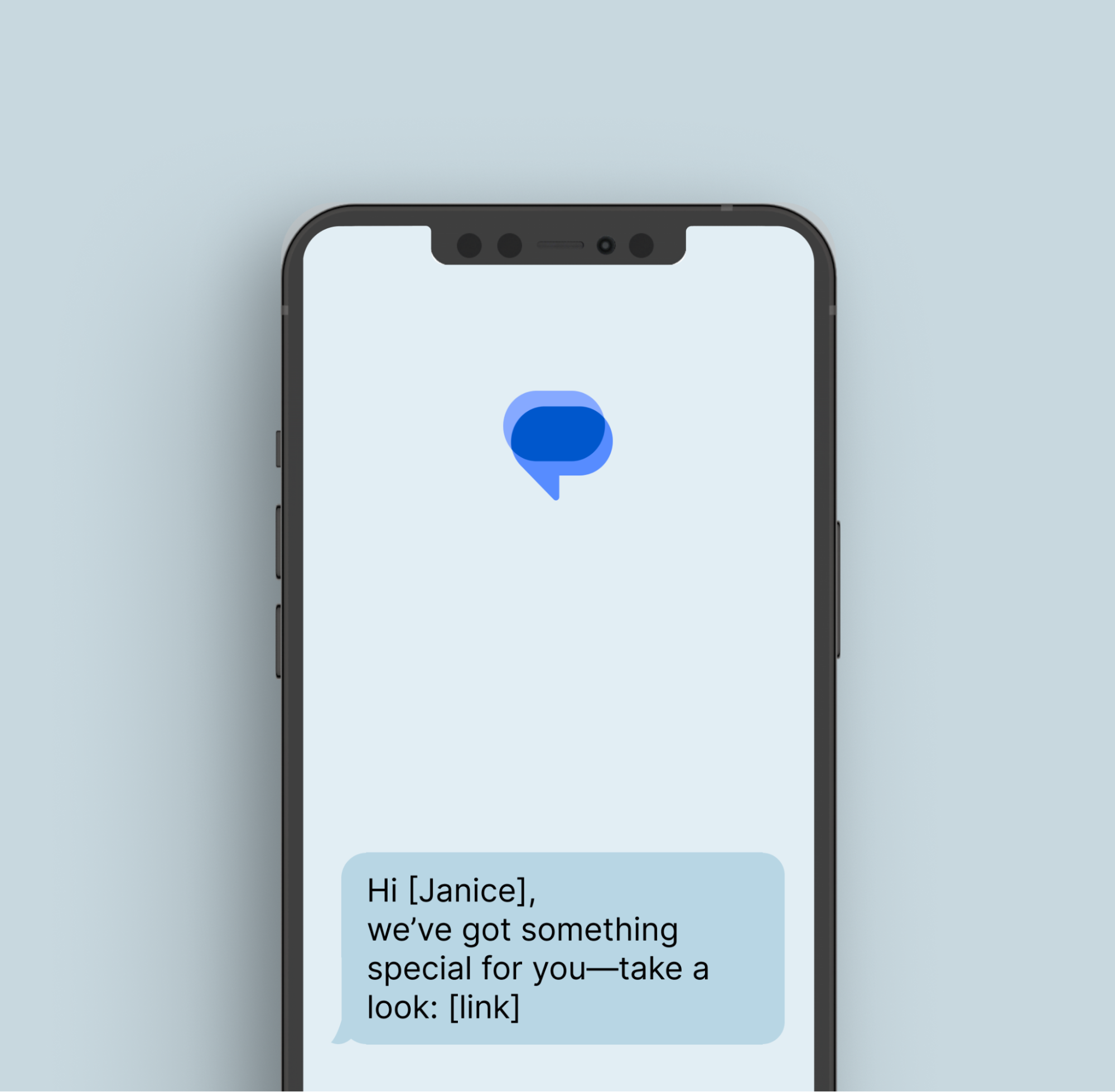×

All it takes is 2 easy steps
If you're a winner, we will send you $100 Amazon gift card at Dreamforce!


Most businesses think that once a text is marked “sent,” it’s as good as delivered. But that’s not how SMS delivery works.
Carriers can block, delay, or silently filter messages based on their content, sender ID, or even timing. This means that what you see as a successful send may never reach your customer’s phone.
That’s a problem when consumers are ready and willing to hear from you. A Statista survey found that 48% of U.S. consumers would opt into SMS from retail and ecommerce brands, and 36% from healthcare providers.
In this article, we’ll explain SMS delivery, how it works behind the scenes, and offer tips for improving SMS deliverability.
SMS delivery is the percentage of outgoing SMS messages that reach the intended recipient’s mobile devices. Although sometimes referred to as the status of a single message, SMS delivery is the rate of delivered messages vs. intended messages, which is called the SMS delivery rate.
To improve your SMS delivery rates, you need to know the difference between a message that is sent, delivered, and received.
When you see “sent” in your dashboard or vendor report, the message was likely never delivered or received. Most delivery issues hide in the gap between “sent” and “read.”
Once your message leaves the SMS platform, it has to go through several checkpoints:
You should also know that carriers rarely notify you if your message was blocked or dropped. You might never know unless you actively monitor your SMS delivery rates or use tools with real-time delivery insights.
SMS delivery is critical for compliance in regulated industries like banking and healthcare. As regulatory scrutiny grows around personal data and digital communication, delivery platforms and telecom providers are tightening their filters. If your messages don’t meet the legal or technical criteria, they often don’t even make it past the first gate. They will silently block or deprioritize messages that violate them.
Moreover, the stakes are even higher in high-volume industries such as retail or education. If you send text messages without compliant opt-ins, use URLs with a poor reputation, or blast messages too fast, your entire batch may get throttled.
One of the most effective ways to make sure your messages send faster and land where they’re supposed to is by choosing the correct SMS number type for your use case.
In the table below, we share the types of phone numbers used for sending SMS and provide an overview of them.
| Number type | Ideal use cases | Message volume limit | Carrier expectations |
| Long code | 1:1 conversations, appointment confirmations | ~1 message per second | Not for bulk messaging; high risk of throttling or blocks |
| Short code | Mass marketing, 2FA, alerts | Up to 100 messages per second | Requires pre-approval; trusted for high-volume traffic |
| 10DLC | Order updates, reminders, alerts, business notifications | 5–15 messages per second | Brand/campaign registration required; designed for businesses |
| Toll-Free Number | Customer support, general notifications | ~3 messages per second (varies) | Must be verified; better deliverability with carrier approval |
If you send promotional, repetitive, or non-compliant SMS messages from unregistered or improperly configured numbers, your carrier or aggregator will likely throttle, filter, or outright block your messages.
Carrier filters use machine learning algorithms to catch repetitive patterns, overly promotional language, and suspicious formatting.
There are additional consequences. Overly promotional SMS messages will annoy customers, drive unsubscribes, and likely cause them to ignore all your future texts, including important messages.
To craft effective campaigns while staying compliant, you can also choose to partner with premium digital marketing agencies. They can provide expert guidance, strategic messaging, and optimized outreach to maximize engagement without triggering filters.
To ensure your texts reach your audience, you must make each look and feel like a genuine, human message. Here’s how you can do that:
Don’t send the same message to thousands of people. Use merge fields and customize every message. Add names, appointment times, order numbers, or city names to make each message unique. When in doubt, seek advice from reliable marketing experts before launching a new campaign.
Instead of:
“Your package has shipped.”
Try: “Hi Alex, your order #3851 is on its way to San Diego.”
You don’t have to rewrite every message from scratch. Have at least 2–3 versions of the same message. Rotate between them to avoid triggering filters. Marketing automation software can help you create different versions of the same message and rotate between them to avoid triggering filters.
Write slight variations in tone or structure, like:

2. “[Name], just confirming your [Time] appointment tomorrow. Waiting to meet you and address your concerns!”

Phrases like “ACT NOW,” “GUARANTEED,” or “CLICK HERE!!!” are major spam flags. Also, don’t go overboard with caps, emojis, or exclamation points. Your message should be concise.
Instead of:
“GET A FREE GIFT NOW 🎁🎁🎁!!!”
Try: “Hi [Janice], we’ve got something special for you—take a look: [link]”

Control your volume and frequency
Sending thousands of identical messages in one blast is a sure-shot way to get filtered. Instead, spread your messages using a trusted SMS platform that lets you throttle send rates. If you’re sending time-sensitive info, batch your messages over several minutes instead of all at once.
Every country has rules about when you’re allowed to send SMS for marketing or promotional content. If you send outside those approved hours, carriers may block your message and regulators may fine you.
Here’s a country-wise breakdown of allowed delivery times.
| Country | Allowed Delivery Time (Local Time) | Notes |
| India | 10:00 AM – 9:00 PM IST | Promotional SMS to Do Not Disturb (DND) numbers are restricted; transactional messages are allowed anytime |
| France | 8:00 AM – 8:00 PM | No sending on Sundays; marketing messages must include an opt-out option |
| United Kingdom | 8:00 PM – 9:00 AM | Marketing messages must include an opt-out method |
| United States | 9:00 PM – 11:00 AM | Some states like Florida, Maryland, Michigan, Washington, and Oklahoma have stricter rules |
| Canada | 9:00 PM – 11:00 AM | Double opt-in is required; marketing messages must include an opt-out option |
| Australia | 9:00 PM – 11:00 AM | Opt-in and opt-out mechanisms are mandatory; political, religious, and gambling-related messages are restricted |
| Germany | 8:00 PM – 8:00 AM | Marketing messages must include an opt-out option |
| France | 8:30 PM – 8:00 AM | Marketing messages must include an opt-out option |
Some tips for a better SMS delivery rate by staying on top of the timing:
If your list is filled with incorrect numbers, you’ll be paying for messages that won’t be delivered and will damage your sender’s reputation.
To not fall a victim to this, you must clean and verify your contact list using the following tips:
As part of your SMS deliverability strategy, maintain strong opt-in hygiene to keep your campaigns effective and compliant. This means collecting explicit, time-stamped consent, clearly setting expectations about message types, and regularly cleaning your list to remove invalid or inactive numbers.
Sending speed refers to how many SMS messages your system sends per second or minute. Different number types (long code, short code, 10DLC) come with different throughput limits:
If your volume jumps without warning, carriers may respond by throttling your messages (slowing them down), filtering them out entirely, or even temporarily blocking your sender ID. What’s more, you might not see any error messages. Everything looks “sent” on your end, but most of it never lands.
This is because carriers are designed to protect users from unsolicited mass messaging, so even legitimate sends can get flagged if they appear to be spam.
For a better throughput, use gradual or controlled sending. This way, you protect your messages from being filtered and improve the SMS delivery rate. It gives you time to monitor performance in real time.
This table shows the dos and don’ts of managing SMS volumes.
| Dos | Don’ts |
| Warm up new numbers gradually with increasing volume | Blast thousands of texts from a new or unverified sender ID |
| Throttle your messages using platform controls | Send all messages at once without pacing or delivery caps |
| Segment your list by geography, time zone, or behavior | Treat your entire audience as one massive list |
| Schedule campaigns in batches over time | Push messages during peak carrier hours with no delivery window |
| Monitor delivery rates and adjust based on feedback | Ignore bounce rates, delivery failures, or delays |
| Register your sender ID (especially for 10DLC/short codes) | Use unregistered numbers for high-volume sends |
Also, most carriers do not publicly disclose their full rules on throughput limits, formatting standards, or content filtering. The systems they use to detect and block spam are deliberately opaque to prevent abuse by bad actors.
While the rules aren’t published, you can find:
For example, the general guidelines are:
Although the carriers don’t publish detailed rules, carrier error codes become your best source of truth. They offer critical clues: a “Message filtered” code typically means your content triggered a spam filter; “Invalid sender ID” indicates you used an unregistered or disallowed number; “Rate limit exceeded” suggests you sent messages too quickly; and “Destination unreachable” points to an inactive or invalid number.
Pro tip: Choose an SMS provider that gives you full access to delivery reports with detailed carrier feedback, not just generic “failed” or “undelivered” statuses. The more granular the error data, the faster you can optimize and recover.
You need aggregators to send messages at scale. However, depending on them too heavily can have its own challenges.
For example, they provide limited insights into message routing, filtering, or carrier-specific failures. If your messages are being delayed, throttled, or dropped, you might only see generic “sent” or “undelivered” statuses, without clarity on what went wrong.
Another issue is that aggregators often route traffic through multiple intermediary providers to optimize for cost. This leads to low delivery rates, slow delivery times, and inconsistent sender ID behavior across regions.
When selecting an SMS provider, prioritize vendors that maintain direct relationships with mobile carriers rather than relying solely on downstream aggregators.
Every additional “hop” your message takes from one intermediary to another introduces delays, risks of misrouting, and potential points of failure. Using incident management software can help monitor these issues in real time, detect anomalies in delivery performance, and ensure faster resolution when message disruptions occur.
Fewer hops mean:
Direct carrier connections also give vendors the ability to:
Your SMS platform plays a significant role in whether your messages reach your users’ inboxes or get lost along the way. To stay in control and ensure high delivery rates, you need a platform built for more than just sending messages. It should be optimized for end-to-end deliverability.
Here’s what to look for in your SMS platform:
When your platform checks these boxes, you gain the visibility and control to fine-tune performance, troubleshoot delivery issues, and confidently scale your SMS campaigns.
With SMS Magic, you connect directly to carriers across different regions, cutting out intermediaries. This reduces the chances of delays or blocks, ensuring your messages reach their destination faster and more reliably. Fewer hops mean you can trust that your messages are getting where they need to go without unnecessary detours.
By adjusting the message flow to align with carrier expectations, you can avoid sudden spikes in volume that may otherwise cause delivery issues. Use SMS Magic’s dynamic throttling to control the speed of your messages, enabling you to meet carrier guidelines.
Consent is tracked at the record level. Your campaign and automation flows are sent only to those contacts who have explicitly opted in. This feature prevents accidental sends to unverified numbers, especially useful in industries with a high send volume.
SMS Magic builds compliance into your workflows so your team does not have to think about them every time. Your SMS text delivery service is aligned with HIPAA, TCPA, GDPR, and 10DLC registration
With SMS Magic, you can send messages at the right time, regardless of the recipient’s location. The system automatically adjusts the send time based on the recipient’s time zone, helping you avoid sending texts during restricted hours, helping you comply with time-related regulations.
With SMS Magic, you get detailed delivery reports that include error codes, timestamps, and performance analytics. Use these insights to track your message delivery and spot any issues early on, such as network congestion or carrier blocks. Real-time visibility ensures you can adjust your strategy quickly and keep your campaigns running smoothly.
The native integration of SMS Magic with your Salesforce simplifies consent and opt-out workflows. SMS Magic logs every opt-in and opt-out with a timestamp, message content, and channel, all tied to the contact’s Salesforce channel. You have an audit trail to show when consent was given or withdrawn.
Check the validity of every contact before sending them a message so that your text is not sent to invalid or unreachable numbers. The benefit of SMS Magic’s real-time contact validation feature is that it reduces delivery failures and saves on costs.
To know more about how SMS Magic improves your SMS delivery rate, book a demo.
“SMS Sent” means your message has left your system and is with the carrier. “SMS Delivered” means the carrier has accepted it. However, this doesn’t guarantee the message reached the recipient’s device, as factors like network issues or spam filters can still interfere.
If your messages show as “delivered” but don’t reach the recipient, it’s likely because the carrier’s spam filters have flagged or silently filtered them.
If the carrier sees repetitive, promotional, spammy, or suspicious content in your text messages, they might block them. Even if the carrier accepts the message, it might still be blocked or hidden on the recipient’s device.
The industry standard SMS delivery rate falls between 90-98%. If you’re consistently below that range, it’s a sign to review your setup. Your number type, message content, or list hygiene might be causing delivery issues.
To send SMS messages faster without hurting delivery, you can use short codes or registered 10DLC numbers for higher throughput. You can also throttle your messages during peak hours to avoid overwhelming carrier systems and spread your sends across multiple numbers instead of blasting from just one.
SMS Magic provides detailed delivery logs, error codes, and compliance audit trails directly within Salesforce. These features allow you to track message delivery status, identify specific errors, and maintain a clear audit trail for compliance.
CATEGORIES: SMS Messaging
Stay updated on business text messaging

Text MAGIC for Demo to
USA: 36343
AUS: (61)409564682
UK & ROW: +44 7860017509
Email: care@sms-magic.com